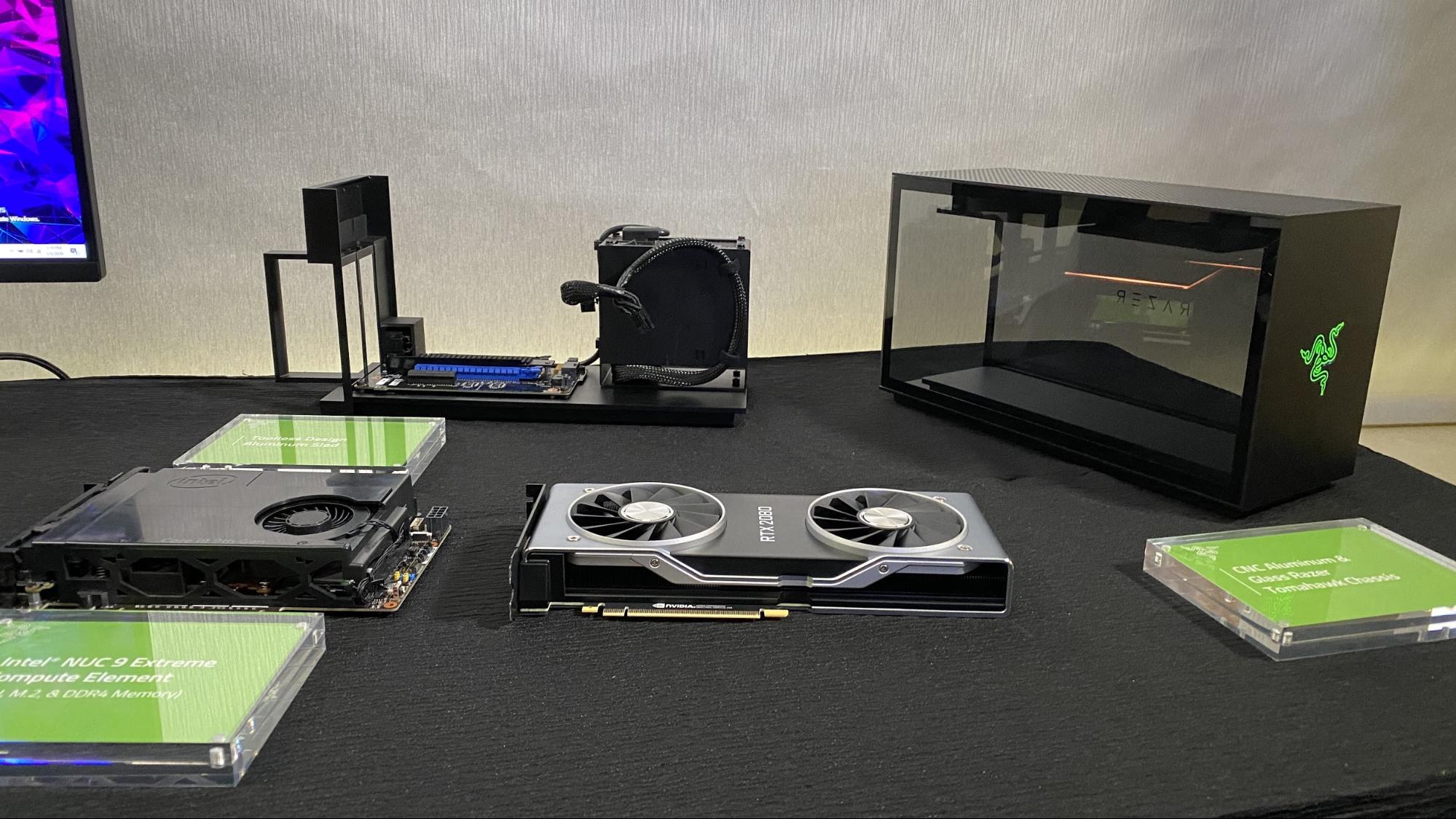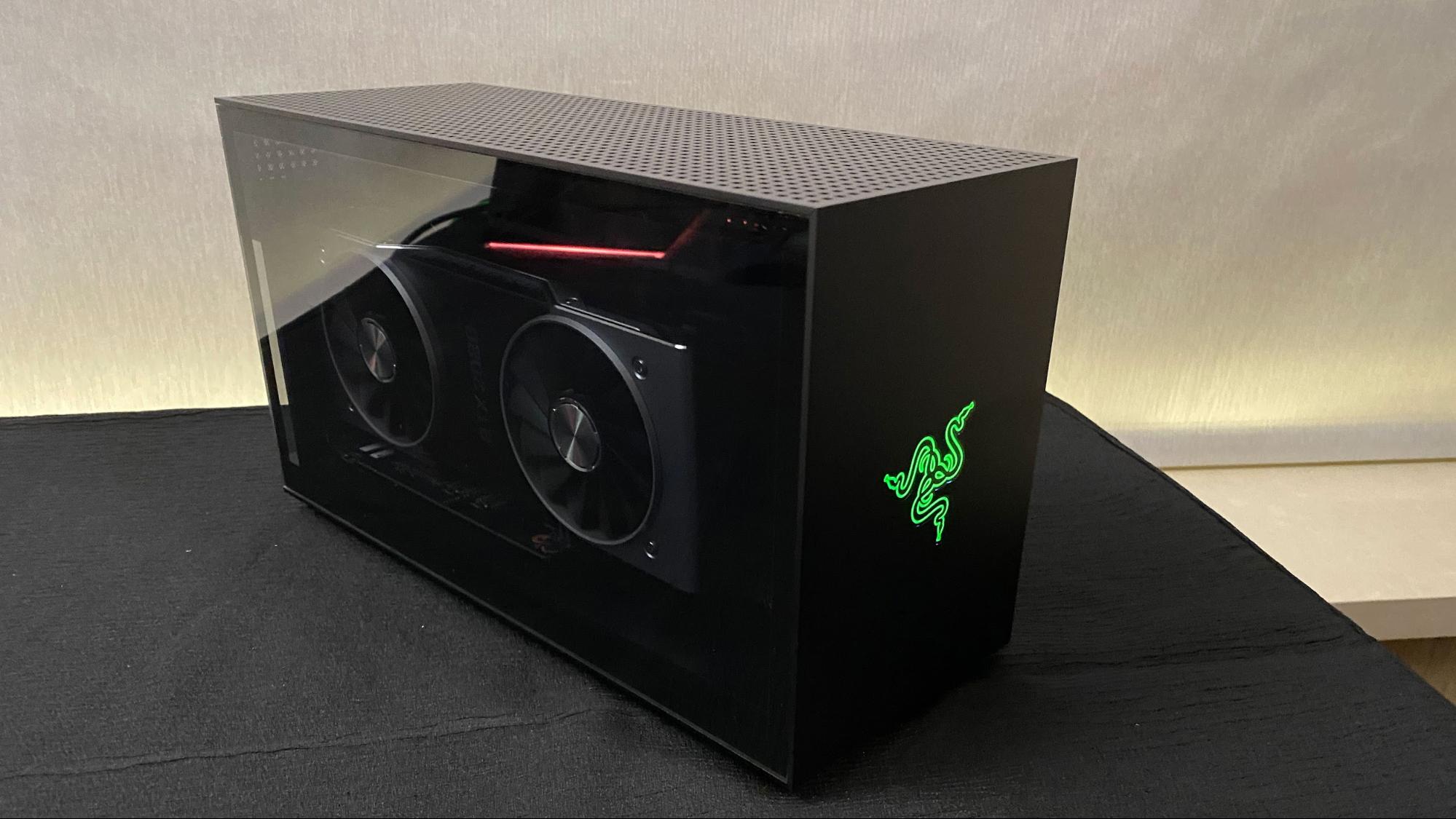Razer Tomahawk Gaming Desktop Puts Intel Compute Element in 10-Liter Case
A tiny, modular desktop.
Razer’s new desktop is awfully tiny. The 10-liter chassis packs its punch with help from Intel’s Compute Element made for modular systems, Razer unveiled here at CES 2020 today. It will launch in the first half of 2020, but no pricing has been announced.
The Tomahawk will be centered around Intel’s Compute Element. The one we saw had a 9th Generation Intel Core i9 CPU. The Compute Element, which fits into the Tomahawk’s tiny motherboard as an add-in card, also features DDR4 RAM and an M.2 SSD. The GPU is a full-sized Nvidia RTX card, going up to an RTX 2080 Super. The power supply is a small-form factor one (up to 750W) that will come with the case.

Razer Tomahawk Specs
| CPU | Up to 10th Gen Intel Core i9 with 8 Cores |
| GPU | Full length Nvidia GeForce RTX (up to RTX 2080 Super) |
| RAM | Up to 64GB DDR4 |
| Storage | Dual M.2 SSD card slots |


At the moment, Razer only plans on selling it as a full system, though reps said the company is considering selling the Tomahawk N1 chassis separately. The PC case has two 120mm fans on the top for exhaust, though there’s room to upgrade them to two 140mm fans.
If you wanted to upgrade parts, you could. The GPU is standard, though the CPU will depend on Intel continuing to make Compute Elements available. To replace RAM and storage you’ll have to crack the Element open.

There are some weird contradictions here. Like Intel’s own NUC 9 “Ghost Canyon,” a gaming desktop with a laptop CPU. But the Element makes for a fast build - a Razer representative put it together in less than 40 seconds (though this was an early case without front panel headers).
But we’re waiting on price. This is a great size, but we can’t yet consider how it compares to a mini-ITX build when it comes to your wallet. But if you want something smaller than even a console, this is one way to go about it.
This may also be the closest that Razer has come to its 2014 concept, Project Christine, a modular PC meant for easy upgrading and building.
Get Tom's Hardware's best news and in-depth reviews, straight to your inbox.
We’re looking forward to seeing this in our labs later this year to see how it performs.

Andrew E. Freedman is a senior editor at Tom's Hardware focusing on laptops, desktops and gaming. He also keeps up with the latest news. A lover of all things gaming and tech, his previous work has shown up in Tom's Guide, Laptop Mag, Kotaku, PCMag and Complex, among others. Follow him on Threads @FreedmanAE and BlueSky @andrewfreedman.net. You can send him tips on Signal: andrewfreedman.01